Attic sculptures at National Museum Cardiff
The exterior of the National Museum building in Cathays Park is home to several figures placed around the top, known as the ‘attic sculptures’. This is a feature that it has in common with the City Hall building right next door.
In fact, when the competition to design the flagship National Museum of Wales building was opened in 1909, the Conditions of Competition included the following guidelines:
‘From the position of the site on the east side of the City Hall and the relation of the Law Courts on its west side, to that building as a centre, it is thought desirable that externally the Museum building should be designed in harmony with these buildings, that, so far as possible, it may be in sympathy with the general scheme adopted.’
The architects who won the building competition, Arnold Dunbar Smith (1866–1933) and Cecil Claude Brewer (1871–1918), worked with the Welsh sculptor Sir William Goscombe John (1860–1952) to come up with a design scheme for the sculptures that would decorate the exterior. Their idea was to have four groups, consisting of two or three figures in each group, for each of the four sides of the Museum. This would have resulted in sixteen sculpture groups in total.
The groups on the South Wing, which is the front entrance of the Museum, were supposed to illustrate the history of Wales and were to be called The Stone Age, The Bronze Age, The Iron Age and The Coal Age.
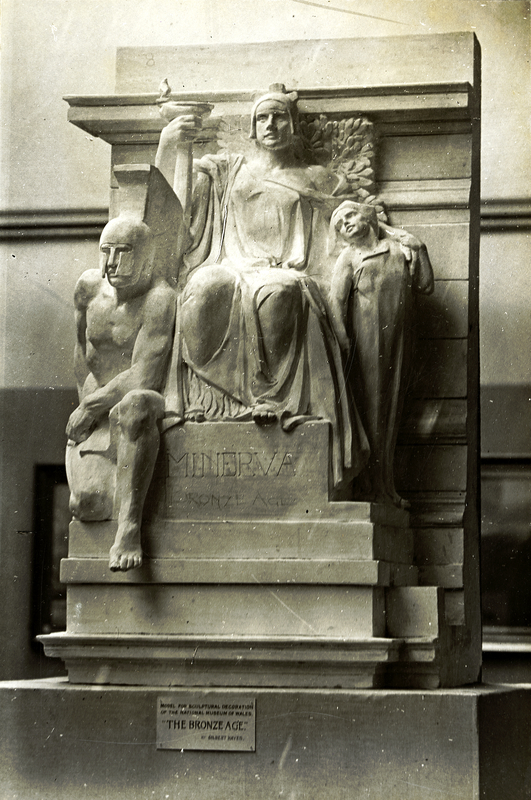
Gilbert Bayes’s plaster model for The Bronze Age, later retitled The Classic Period.
The four sculpture groups for the West Wing were meant to represent the industries of Wales. These were defined as Agriculture, Mining, Shipping and Iron and Steel.
The East Wing groups would focus on the sciences, and were listed as Astronomy, Chemistry, Physics, Biology and Geology and Archaeology.
And, finally, on the North Wing the arts would be represented by Literature, Music, Graphic Arts and Architecture/Sculpture.
As the Museum building was to be completed in stages, wing by wing, starting with the South Wing, it was decided to focus on commissioning the sculptures in that area first.
In 1914 fourteen sculptors were invited to submit models to a limited competition. They advised that ‘the sculpture is to form part of the building, and not be applied to it, and that therefore a monumental and masonic, rather than a plastic treatment is required’ and that they have a ‘monumental and symbolic, rather than pictorial treatment, and that, too much must not be sacrificed to historical accuracy and attempted realism’.
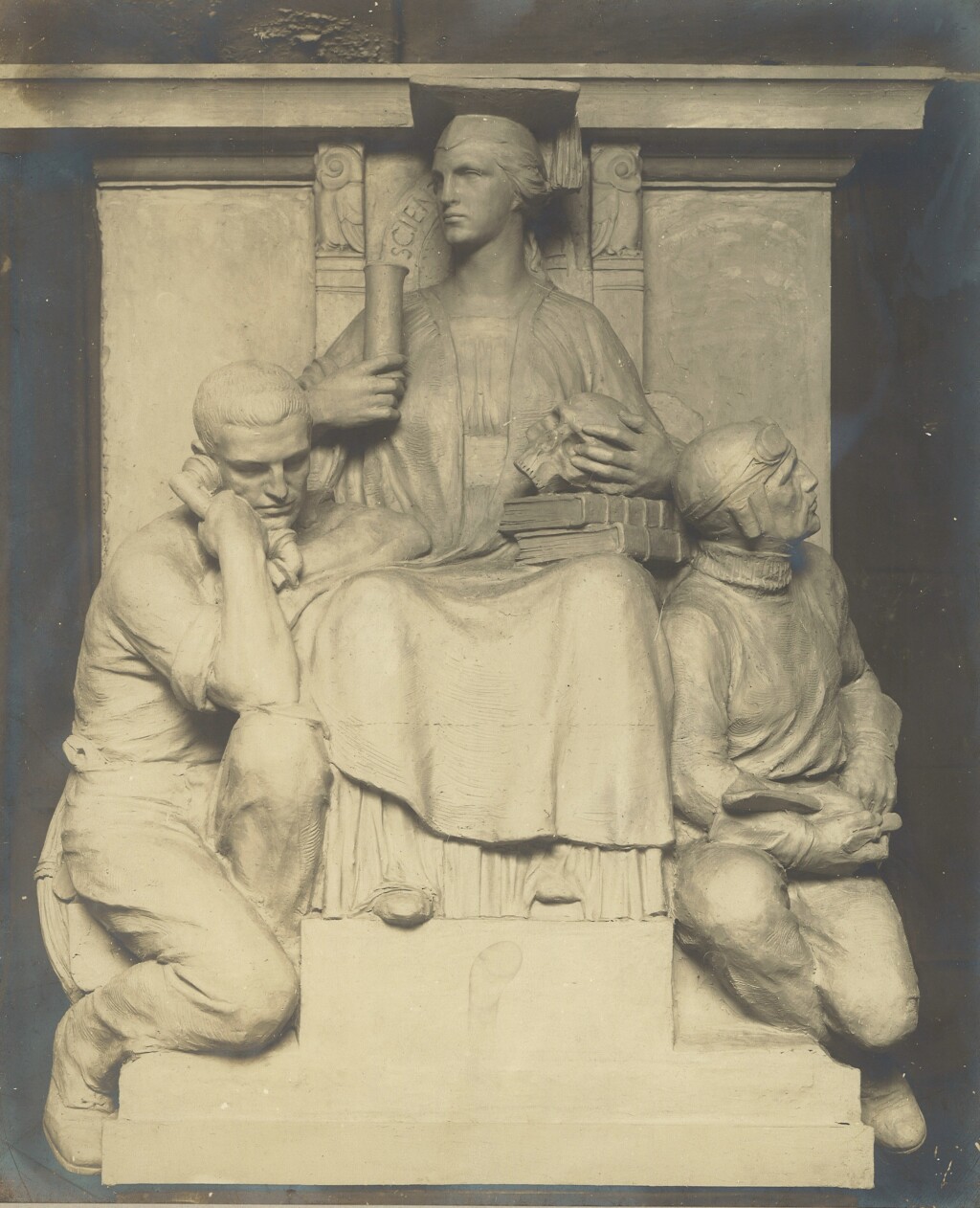
The Modern Period by Richard Garbe
The 1914–1915 Museum Annual Report lists the winning artists as:
- Gilbert Bayes (1872–1953) for his model The Bronze Age
- Richard L. Garbe (1876–1957) for his model The Stone Age
- Thomas J. Clapperton (1879–1962) for his model The Coal Age
Each winning artist was asked to produce a final version of his design and submit a companion sculpture to go with it. Additionally, the competition assessors decided that the four Ages were no longer satisfactory and renamed them as the Prehistoric Period, the Classic Period, the Mediaeval Period and the Modern Period.
Therefore, Gilbert Bayes was tasked with producing The Prehistoric Period and The Classic Period, as the renamed Stone Age and Bronze Age groups were now called. Richard Garbe produced The Mediaeval Period and The Modern Period, which were the renamed Iron Age and Coal Age groups. These four sculpture groups completed the History of Wales scheme for the front of the South Wing.
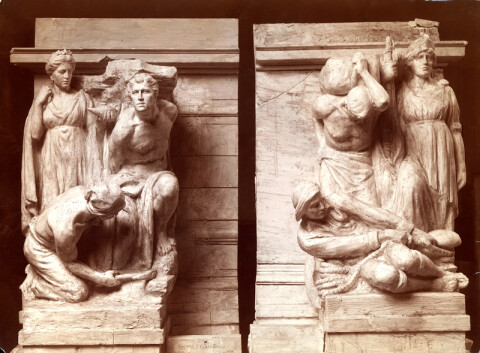
Mining and Shipping by Thomas J. Clapperton
The other winner, Thomas J. Clapperton, was asked to rename his Coal Age sculpture as Mining and create a second sculpture group called Shipping. These were to be the first two of the four sculpture groups that were to represent the Industries of Wales on the West Wing. A section of the West Wing was built at the same time as the South Wing, and so there was space available to accommodate these two groups.
There were also a couple of other exterior sculptures commissioned at this time, although they were not part of the attic sculpture scheme. Two dragons and two lions were designed by A. Bertram Pegram to be placed around the base of the dome. It’s worth pointing out that no plans were ever made to put a sculpture on the top of the dome to mirror the dragon on the top of the City Hall dome; such a sculpture is not pictured in any of the architects’ drawings of the Museum.
This was as far as the attic sculptures scheme progressed until the extension of the East Wing in the 1930s. The East Wing, up to and including the Reardon Smith Lecture Theatre, was officially opened in 1932. However, by this point the original scheme for the attic sculptures was radically changed. Instead of the three figure groups of the South Wing, these sculptures were all single figures.
The belief was that as the East Wing wouldn’t be viewed as much as the main entrance of the South Wing, the sculptures therefore no longer needed to be three-figure groups. The Building Committee minutes of February 1936 state that ‘While it is important that these carvings should do their duty by helping to complete the architectural design, it is submitted that three-figure groups in high relief are not necessary’.
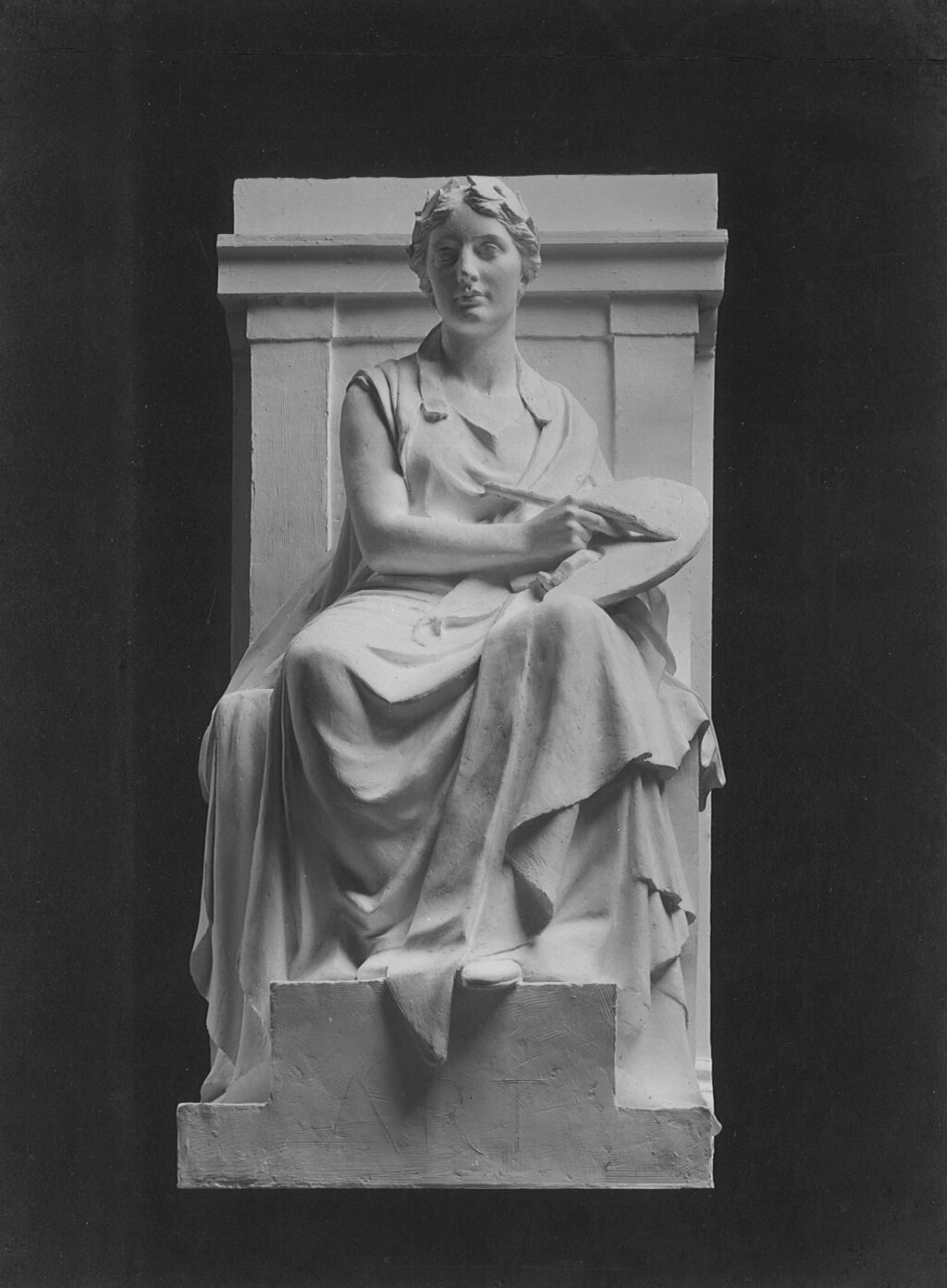
Art by Bertram Pegram
Instead of the original plan to depict the sciences on the East Wing, the committee decided to commission sculptures more in keeping with the arts, the theme originally planned for the North Wing. As a result, the sculptures created for the East Wing were Learning by Thomas J. Clapperton (the sculptor responsible for the two existing West Wing sculptures), Music by David Evans (1893–1959) and Art by A. Bertram Pegram, the creator of the lions at the base of the dome.

Music by David Evans
It wasn’t until the 1960s that the remainder of the West Wing was built, and the final two attic sculptures for that section of the building could be added. These sculptures followed the single figure format of the 1930s East Wing designs, rather than the group design of the two existing West Wing sculptures by T.J. Clapperton.
Both sculptures are by Jonah Jones (1919–2004); in the first Natural History is represented by Saint Melangell holding a sheaf of flowers, ferns and grasses, and handling a ram’s skull ‘with a hare about her skirts’. The second is Industry, represented by a slate quarryman splitting slate. Although the sculptures don’t use the names from the original scheme (Agriculture and Iron and Steel), they do allude to the theme of the West Wing, the industries of Wales.
The final attic sculpture was commissioned in the 1980s when work was completed on the East Wing to match it in parallel with the West Wing. The Art Committee decided in 1988 to approach five sculptors with plans to create a figure to pair with the sculpture of Music by David Evans and complete the arts theme for that wing.
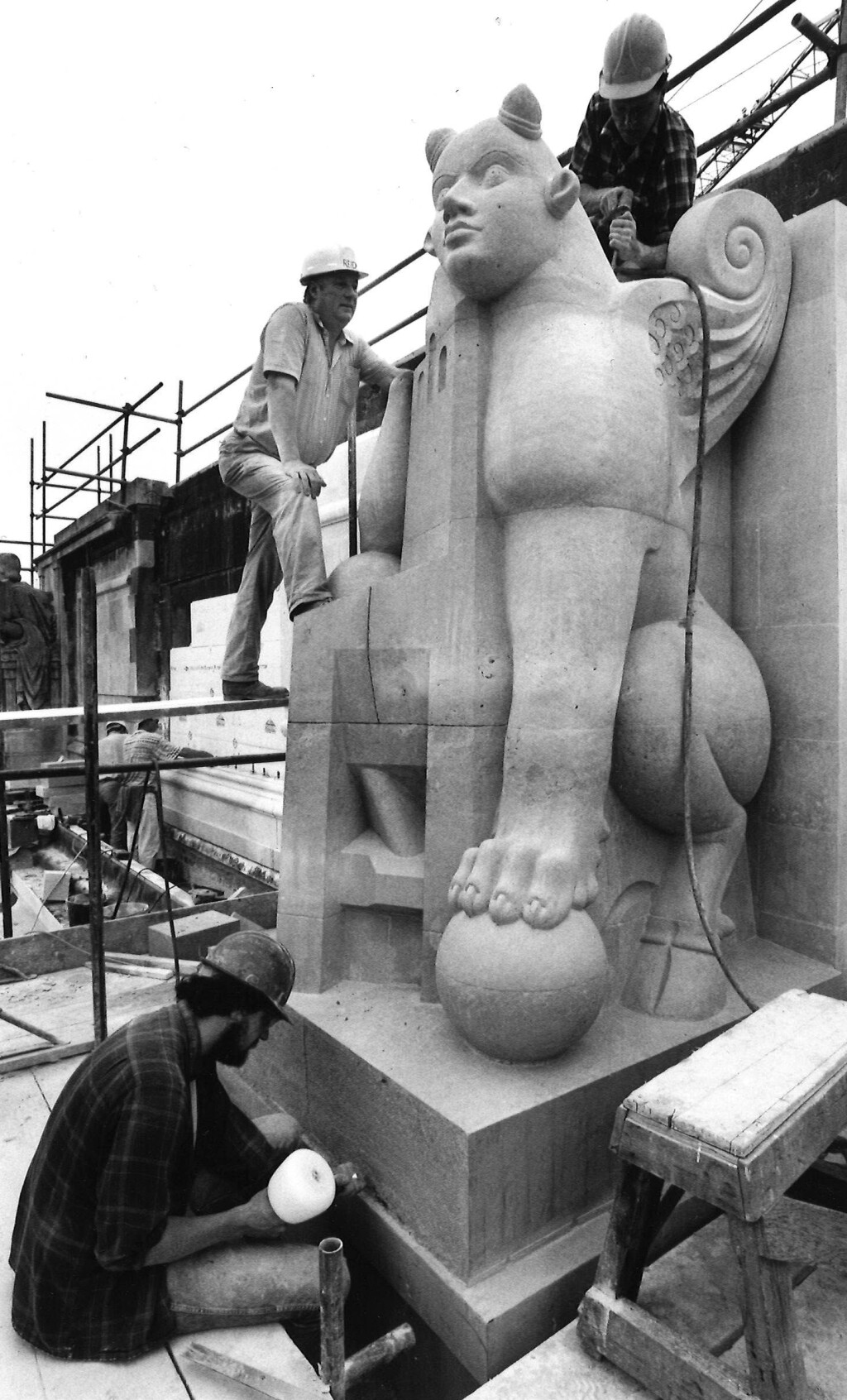
Reguarding Guardians of Art by Dhruva Mistry
The chosen sculpture, installed in August 1990, was Reguarding Guardians of Art by Dhruva Mistry (1957– ), a figure of a part-human, part-animal winged creature. Although the style of this sculpture is quite different to that of the other attic sculptures, in the words of the then Keeper of Art, it ‘meets the requirement of the situation admirably particularly from the point of view of composition and scale’.
The original architects’ plans for the Museum building also included a North Wing, but as it was never built, no attic sculptures were ever created. This means that of the initial sixteen sculpture groups that were planned for the exterior of the Museum building, only twelve were completed. Of those twelve, half are the original three-figure groups and half are individual figures. Perhaps if a North Wing is ever constructed, a new competition will be launched to design the remaining four attic sculptures.
